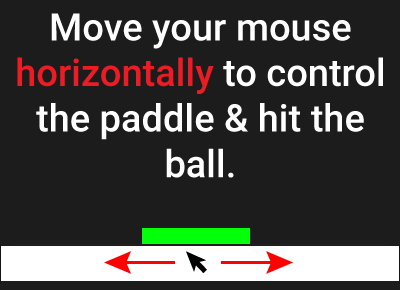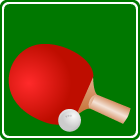


3 scores max per player; No foul language, show respect for other players, etc.
Name | Score | Date | ||
|---|---|---|---|---|
| 1 | ||||
| 2 | ||||
| 3 | ||||
| 4 | ||||
| 5 | ||||
| 6 | ||||
| 7 | ||||
| 8 | ||||
| 9 | ||||
| 10 |

Game: PONG
Aim: Break the bricks, score points
Method:
Use your mouse or tap in the white bar to move the paddle horizontally to bounce the ball up the screen. Answer questions when you break the white bricks, score big points with the yellow bricks.
Your final score is based on correct answers, bricks broken and time taken.

Salma Khan 🐱🐱🐱
"Place value names: 4-digits"
PONG game to practice
'LCM using product notation' for 7th grade
7th grade / Number / Multiples Factors Primes / Multiples / LCM using product notation
Show the lowest common multiple of 2 numbers using product notation
To find the lowest common multiple (LCM) of two numbers, you need to find the smallest multiple that both numbers have in common. One way to do this is to use prime factorization and product notation. Here are the steps:
- Write each number as a product of prime factors.
- Then write the prime factors of each number, multiplying each factor by the highest power it appears in either number.
For example:
The prime factorization of one number is 2² x 3 x 5.
The prime factorization of the other number is 2 x 3² x 7.
The product notation is 2² x 3² x 5 x 7.
If required, you can simplify the product notation by multiplying the bases and their respective exponents. For example, 2² x 3² x 5 x 7 = 4 x 9 x 5 x 7 = 1260.
Here's an example of how to find the LCM of 12 and 15 using product notation:
Write each number as a product of prime factors.
- The prime factorization of 12 is 2² x 3
- The prime factorization of 15 is 3 x 5
Write the prime factors of each number in product notation, multiplying each factor by the highest power it appears in either number: 2² x 3 x 5. Note that the factor 5 appears in only one of the numbers but we still include it in the product notation.
To get the LCM as a number you can simplify the product notation by multiplying the bases and their respective exponents.
Therefore, the LCM of 12 and 15 is 2² x 3 x 5 in product notation, which is 60.
In this topic you are asked to use prime factorization to derive the lowest common multiple of 2 numbers and present your answer using product notation.
With our Pong math game you will be practicing the topic "LCM using product notation" from 7th grade / Number / Multiples Factors Primes / Multiples Factors Primes. The math in this game consists of 16 questions that ask you to identify the lowest common multiple (LCM) of 2 numbers using product notation.

In our version of Pong/Breakout, there are 3 types of bricks for you to break: green bricks are worth just 2 points; yellow bricks are worth a whopping 50 points; breaking white bricks, which are worth 10 points, wins you a math question from the topic you have chosen.
You start with 5 lives. If the ball goes below the paddle, you lose a life and 200 points. The game ends when you answer all 10 questions or lose all your lives.
Notes
- This version of Pong is a one player game to learn or revise math
- Our PONG for math is a scoring game - play a few times and set a personal best score!
- Addictive! You may end up trying to avoid the white bricks so that you can play for longer...
UXO * Duck shoot * The frog flies * Pong * Cat and mouse * The beetle and the bee
Rock fall * Four in a row * Sow grow * Choose or lose * Mix and match

Latest leaderboard entries: Pong




How to play PONG to practice
'LCM using product notation' for 7th grade

- Select the PONG game from the games selection page.
- On the settings page there are brief instructions on how to play.
- Click on PLAY to enter the game screen.
- The clock starts when the bell rings.
- Move your mouse (or finger tap or drag in the white bar for touch screens) to move your paddle left and right.
- Knock the ball back up the screen to break the bricks.
- You start with 1000 points and 5 lives.
- You lose 1 point every 2 seconds.
- 200 points are deducted from your score for each life lost
- Green bricks score 2 point, yellow bricks score 50 points, white bricks score 10 points and open the question screen.
- For each question click/tap on the correct answer or enter it using the keyboard.
- Wrong answers lose you 25 points but correct answers win you 50 points.
- Continue breaking bricks and answering questions until you have cleared all the question bricks.
- The game also ends if you lose all 5 of your lives.










